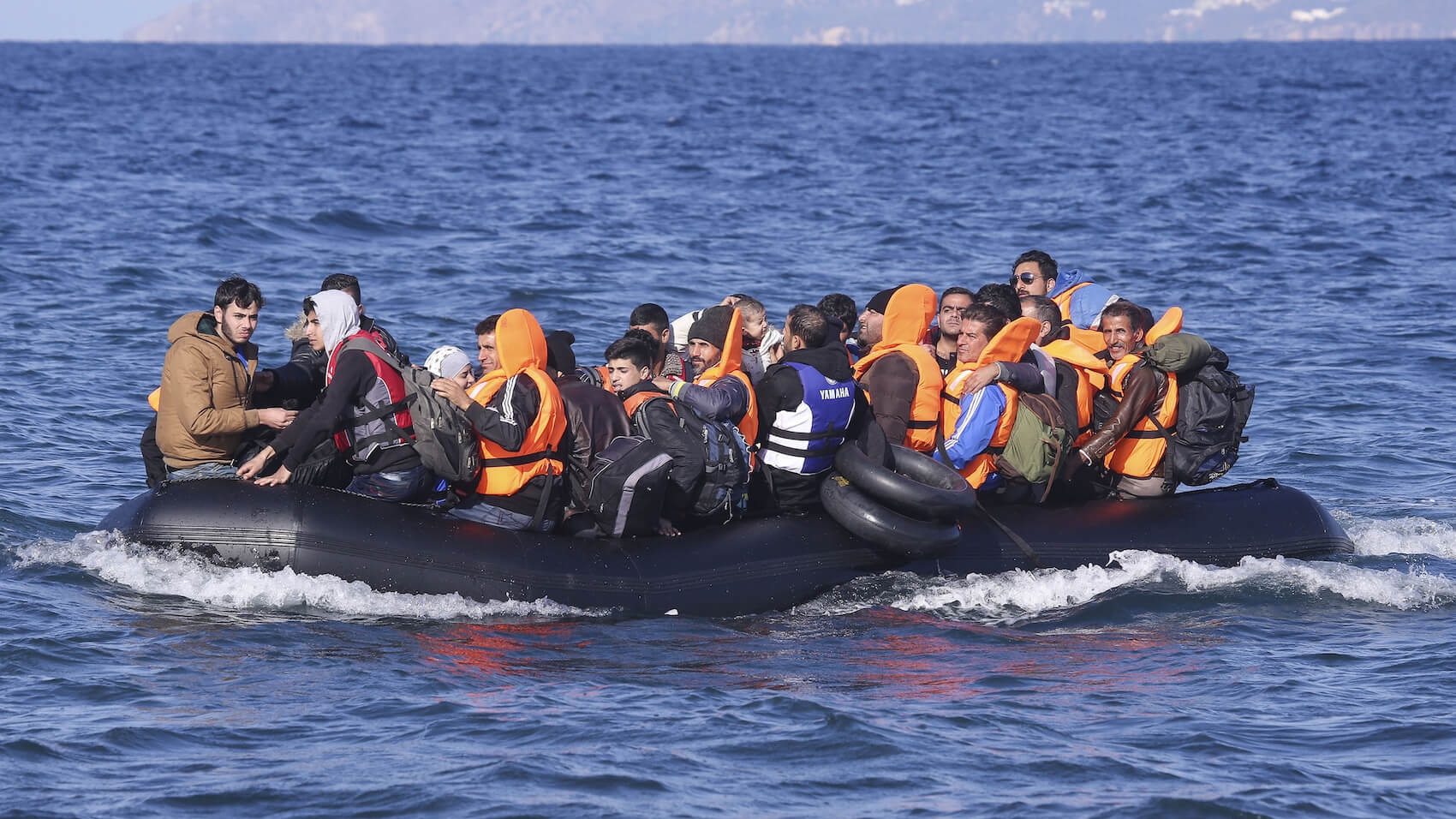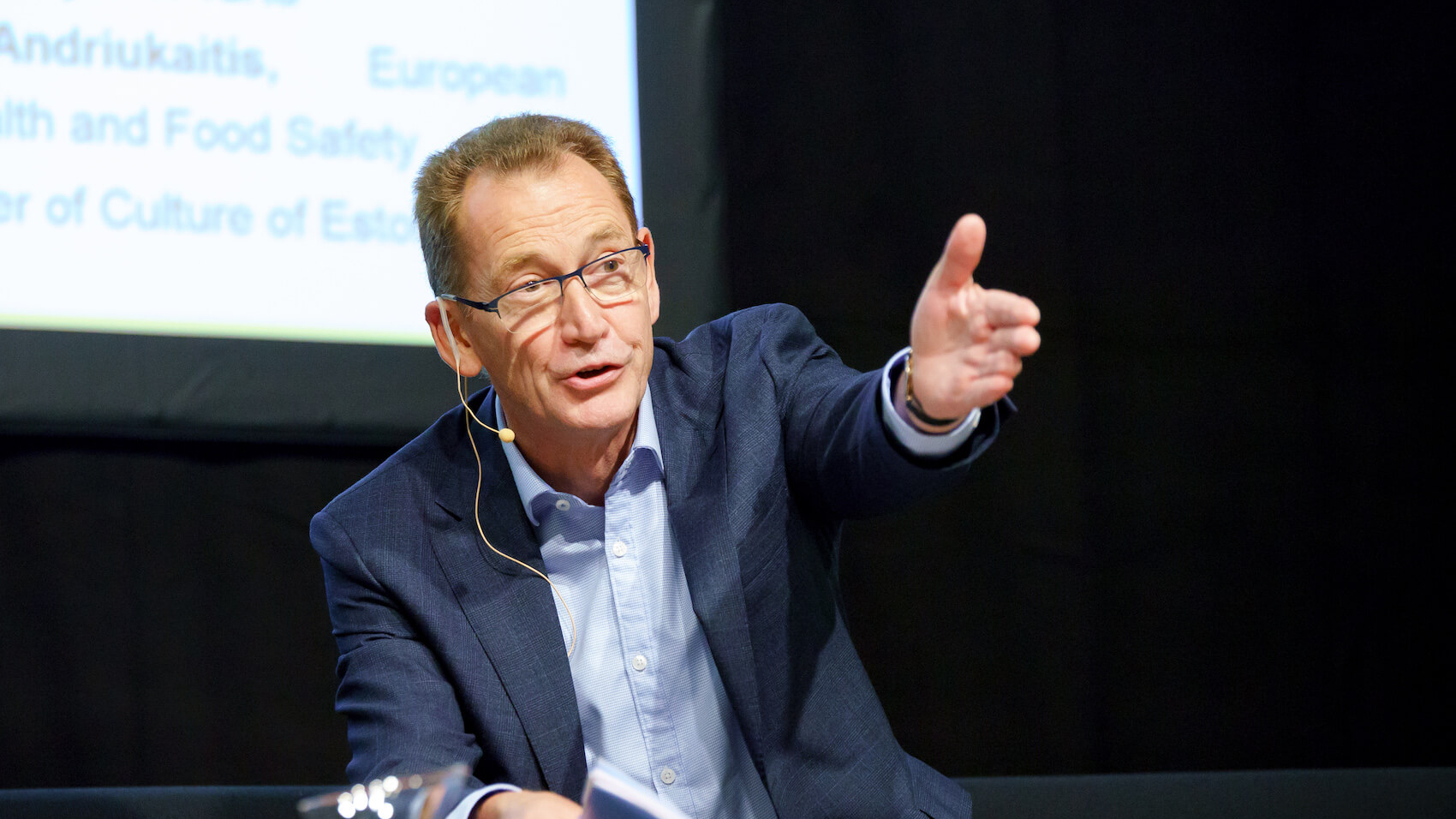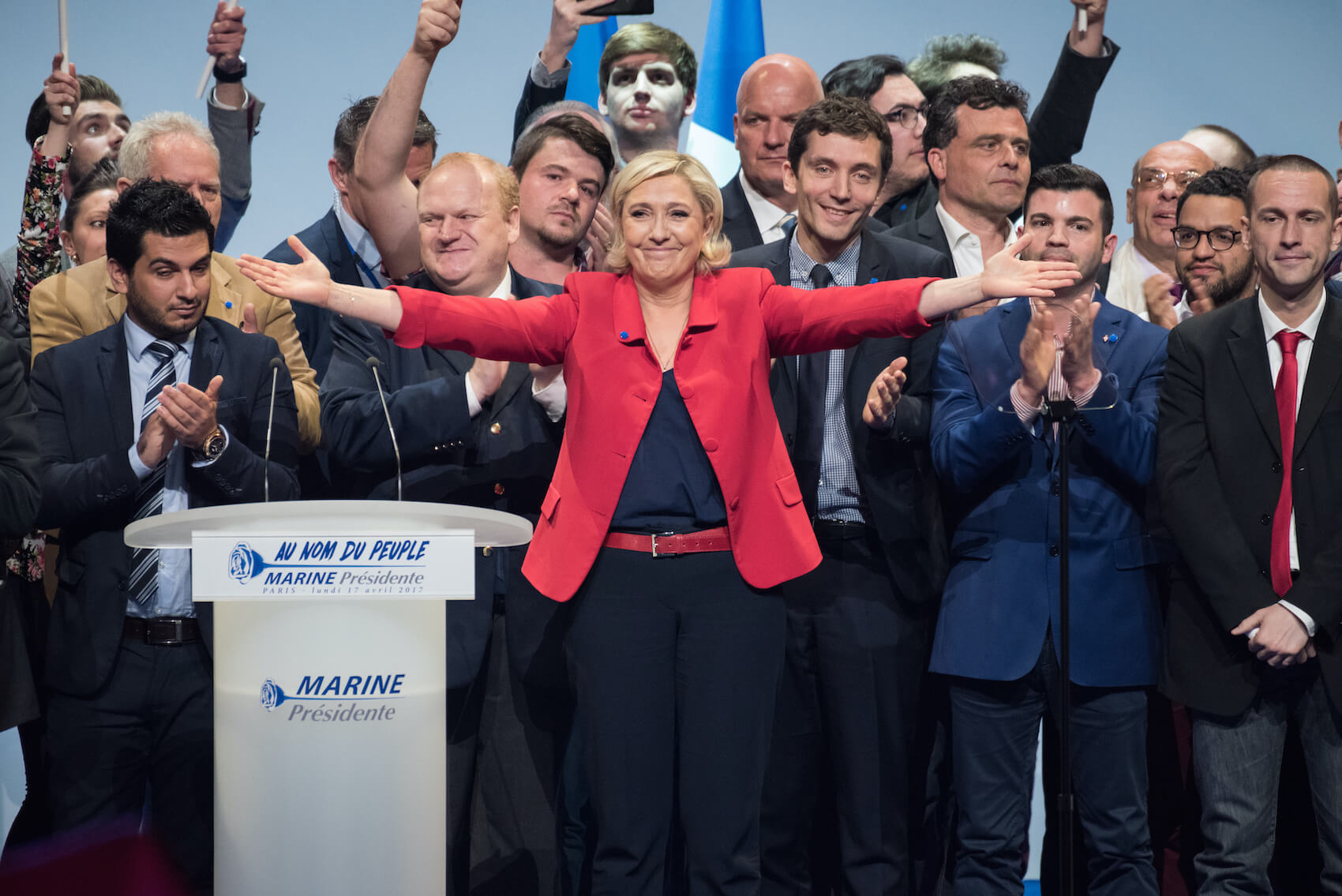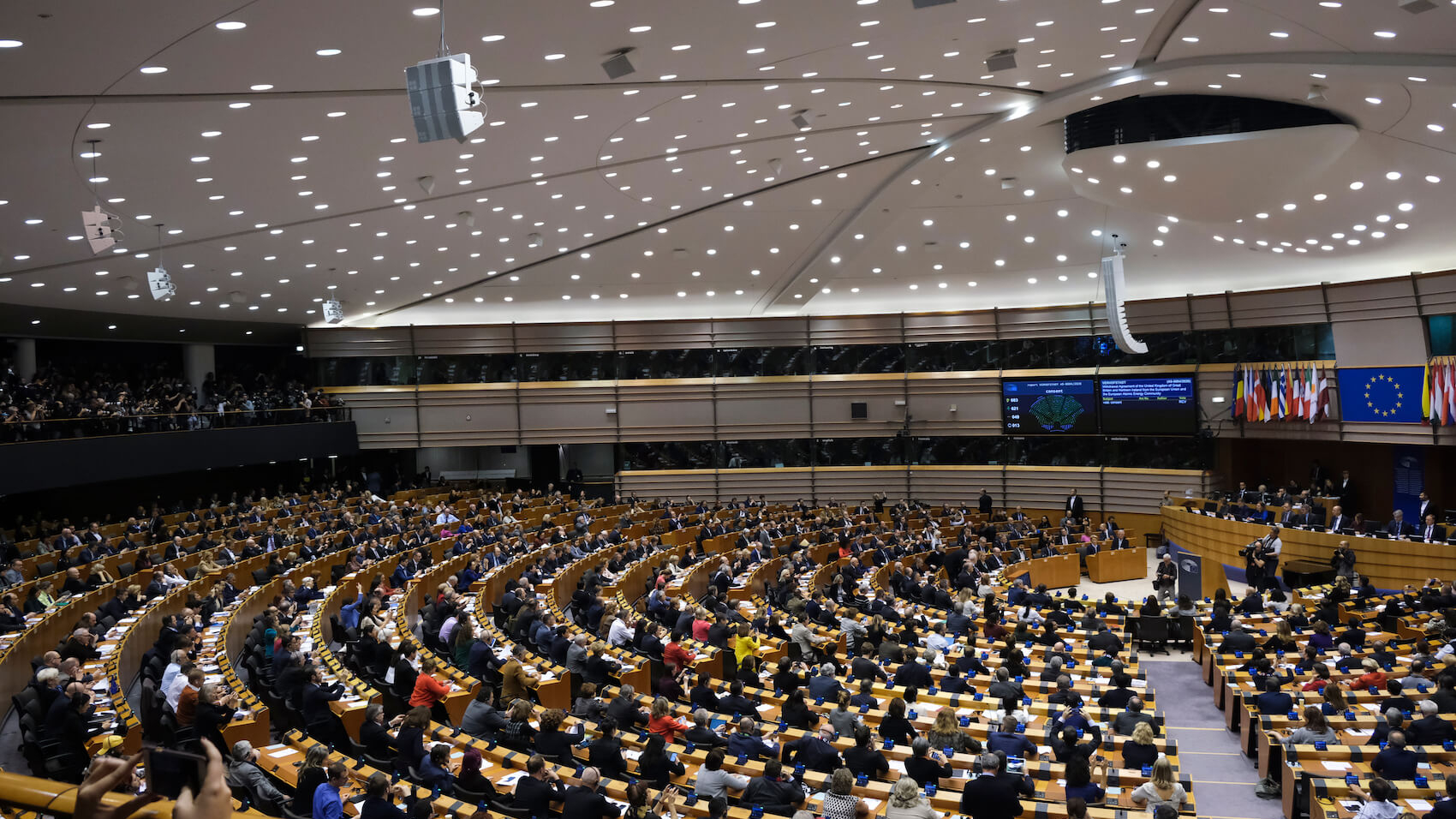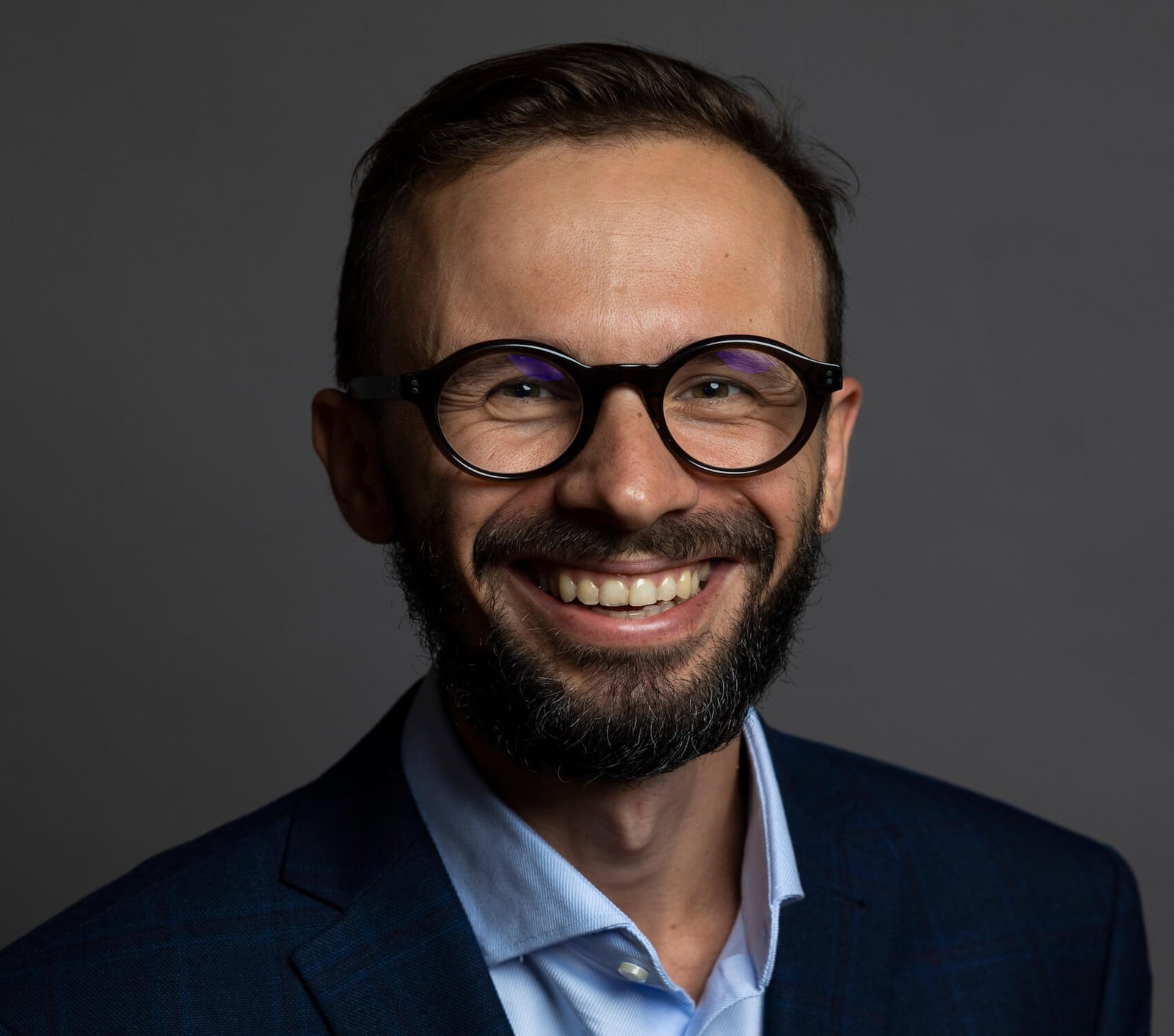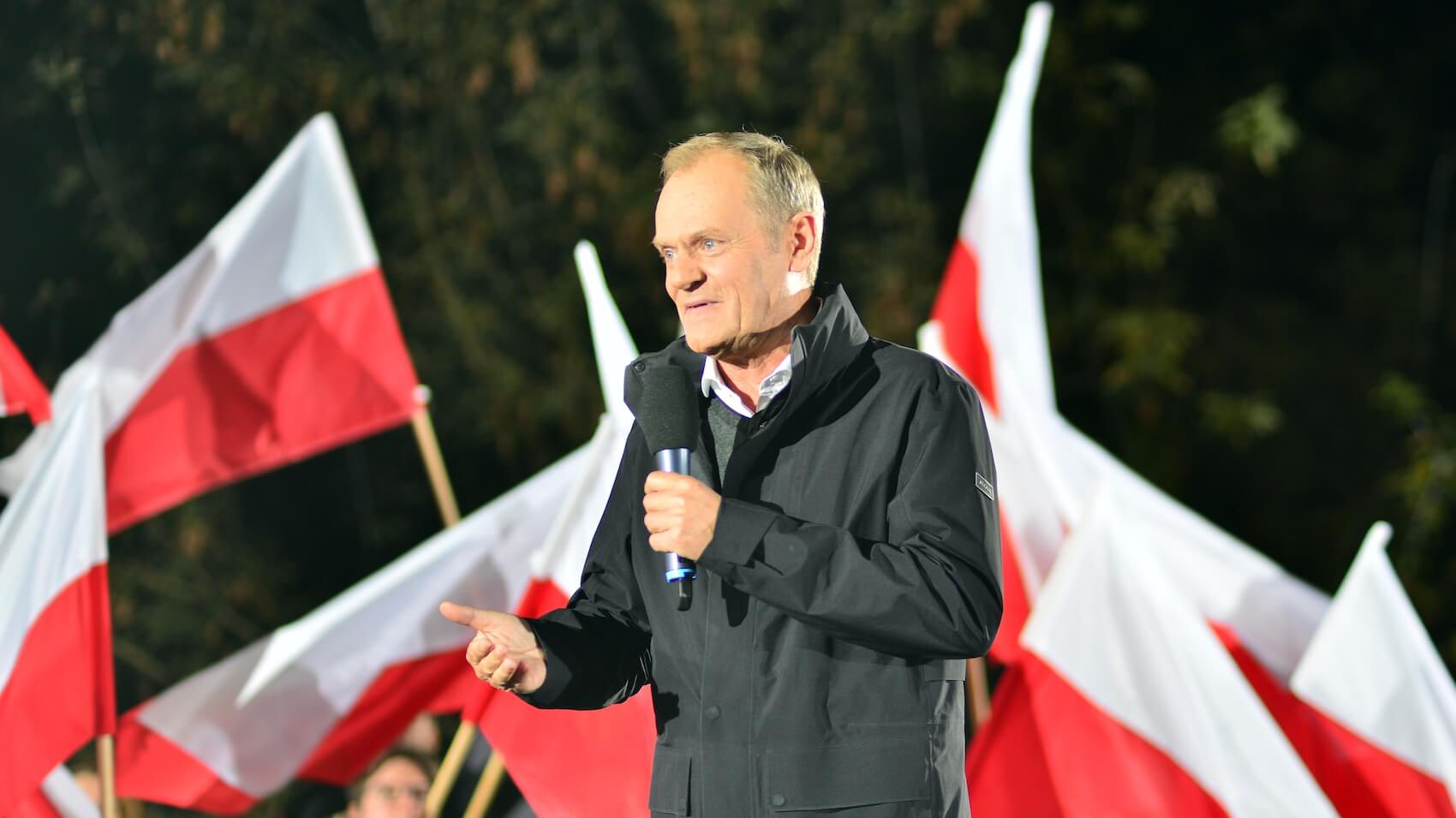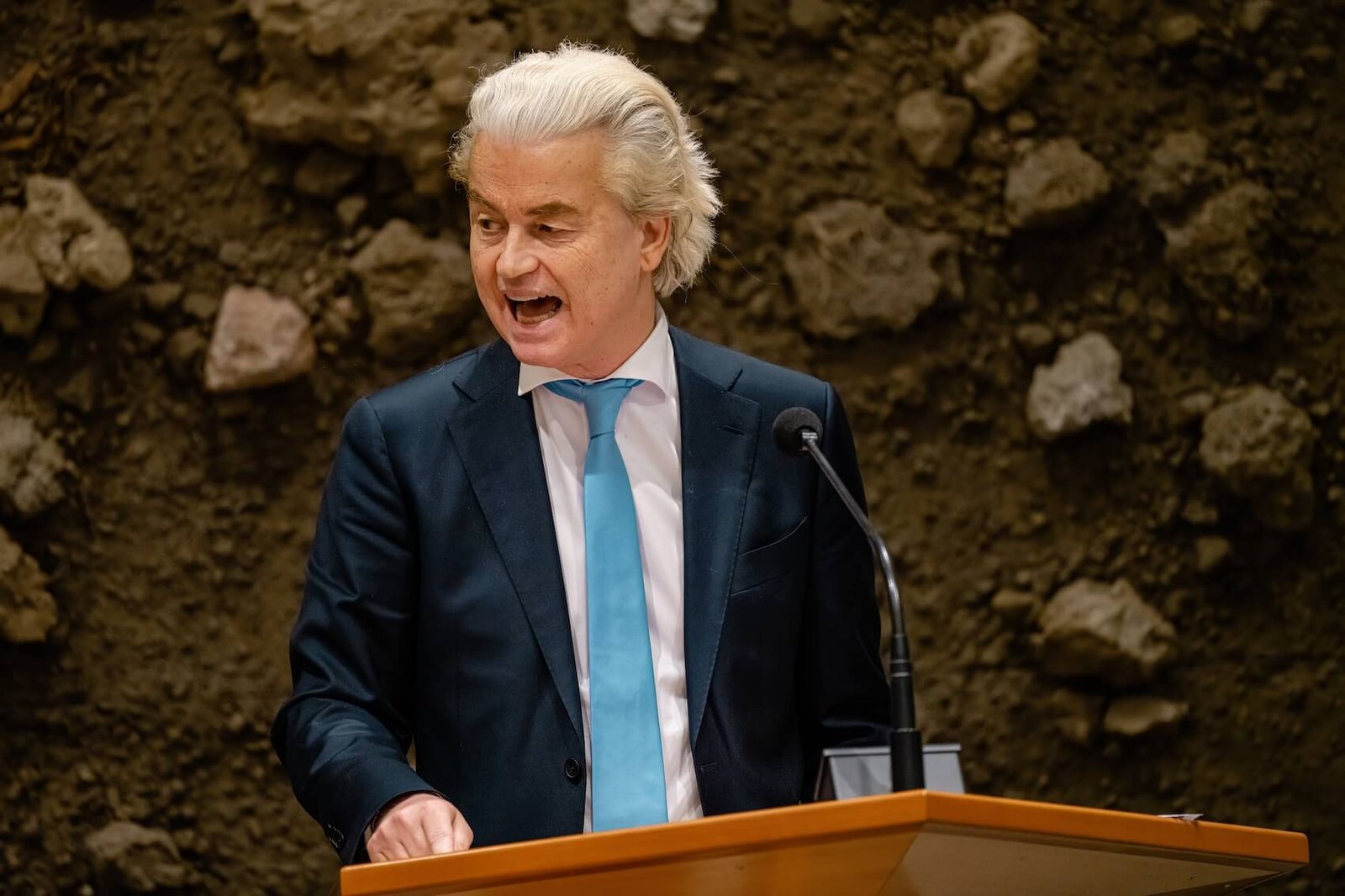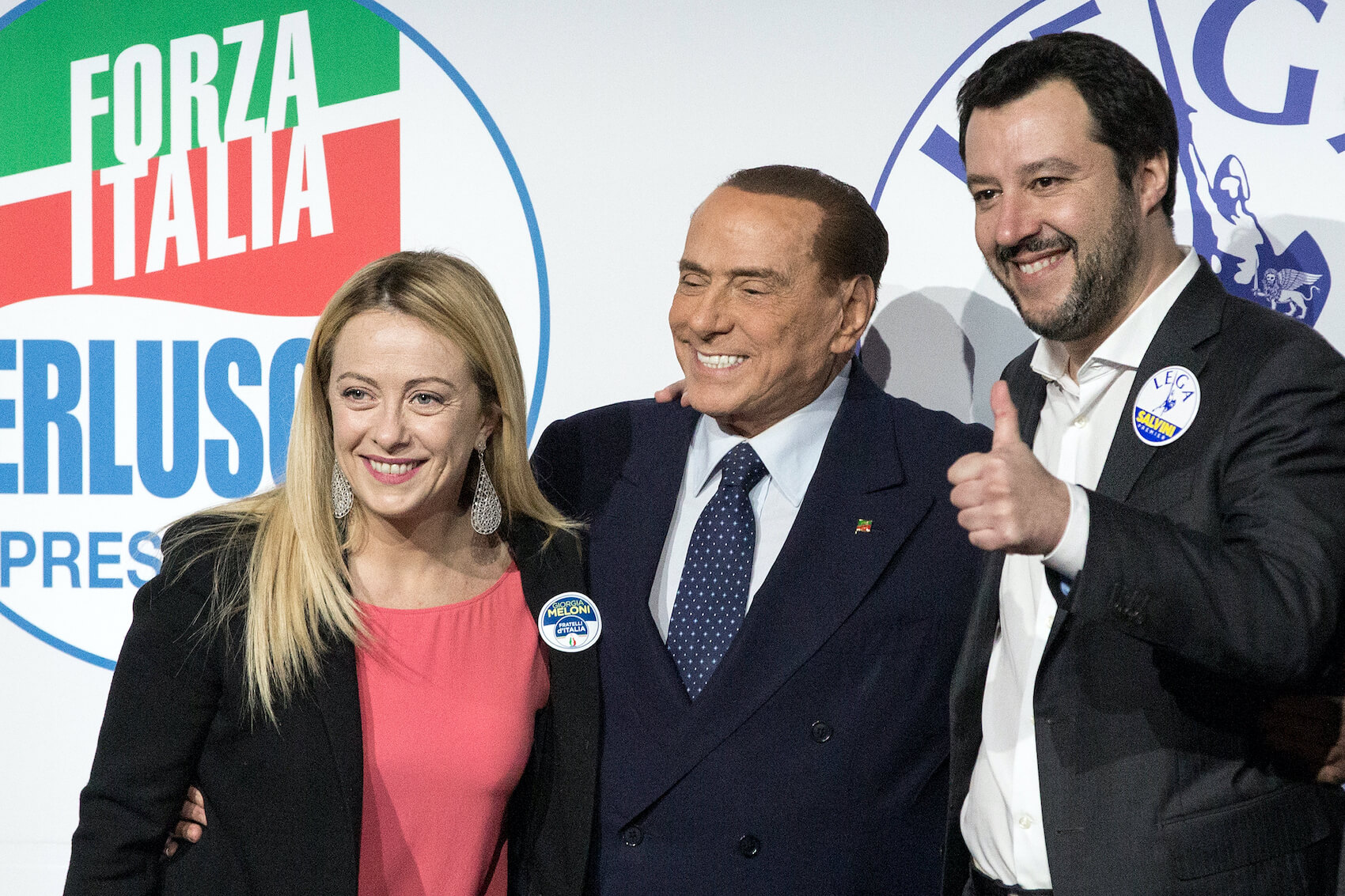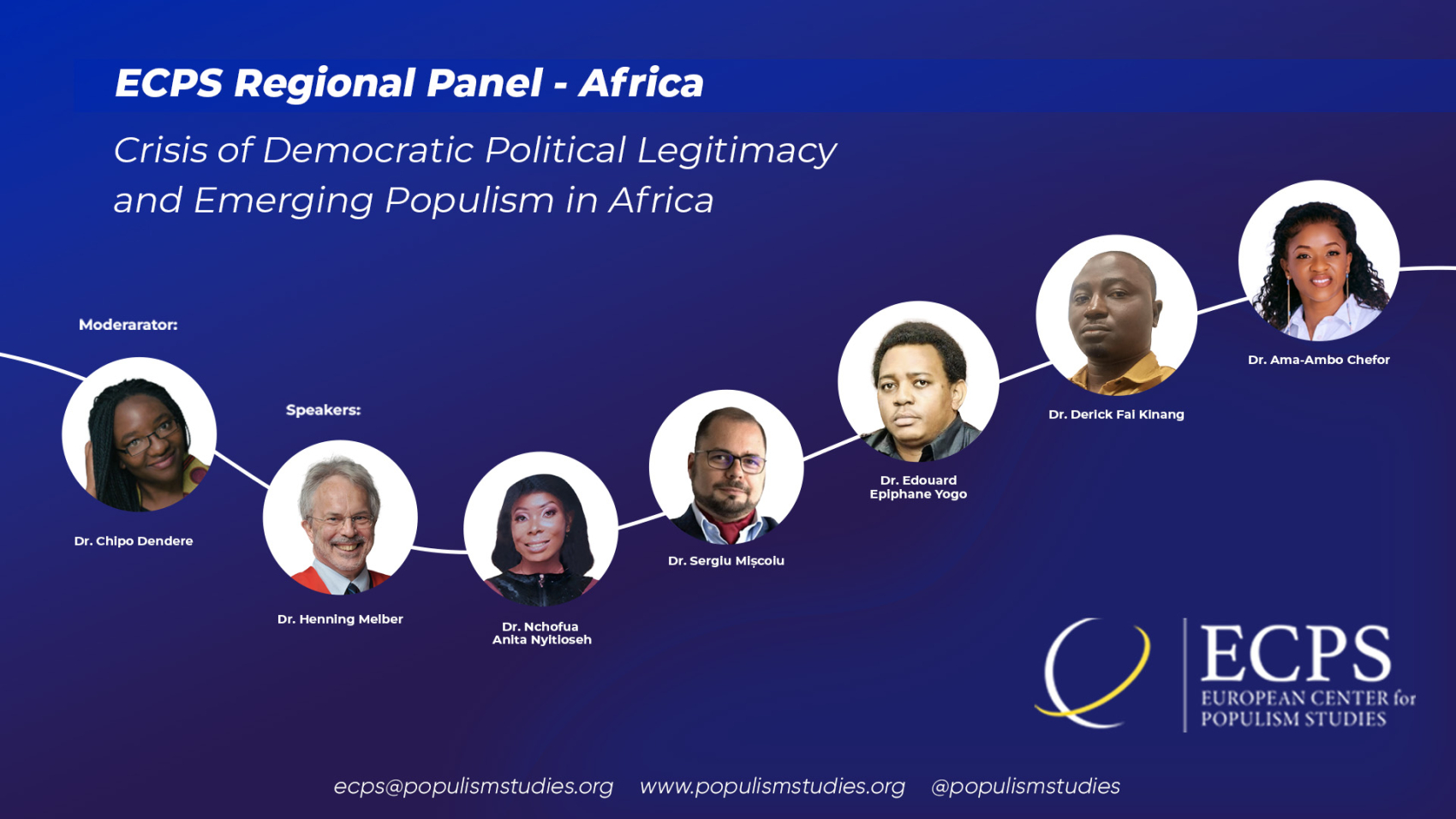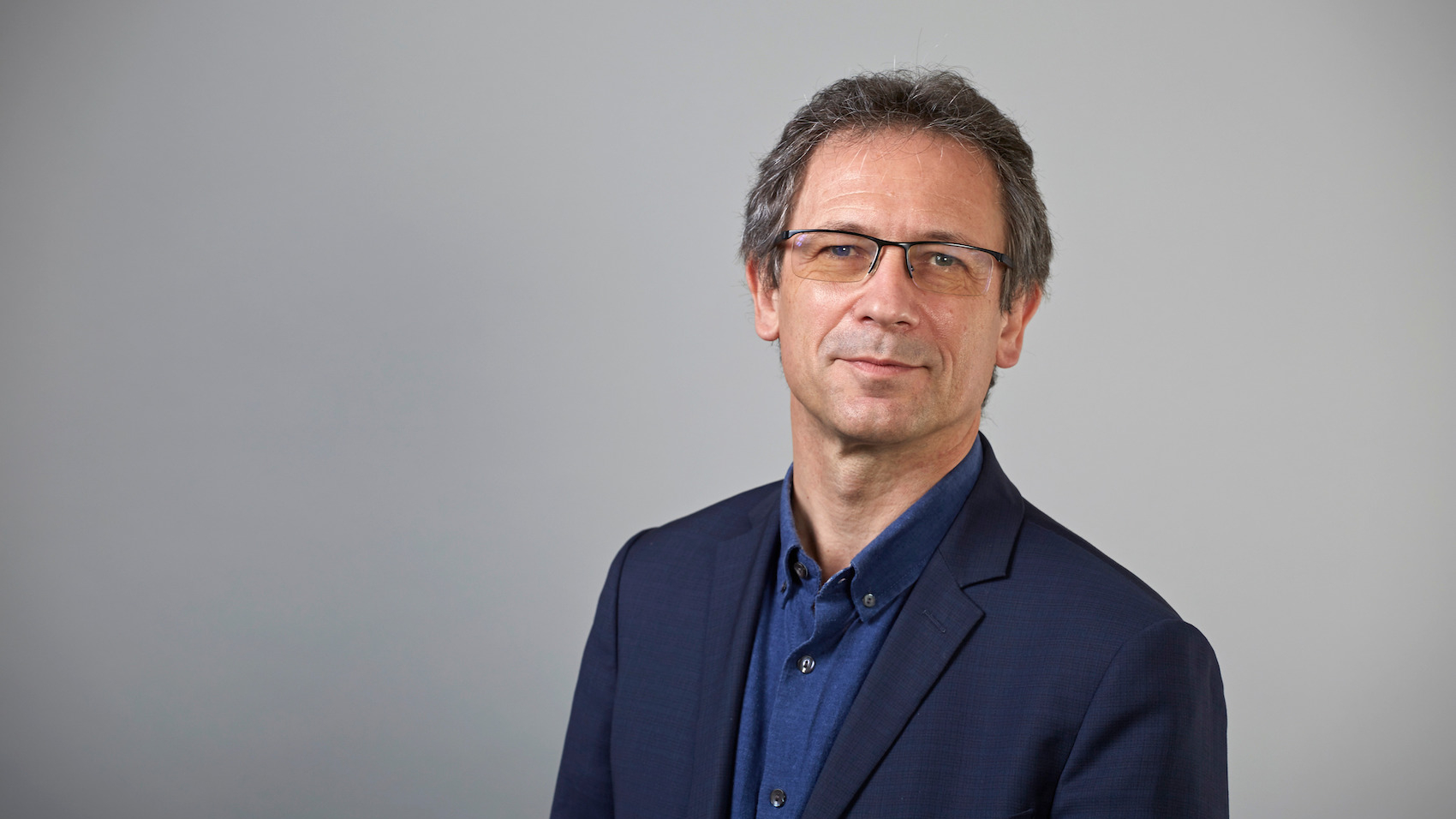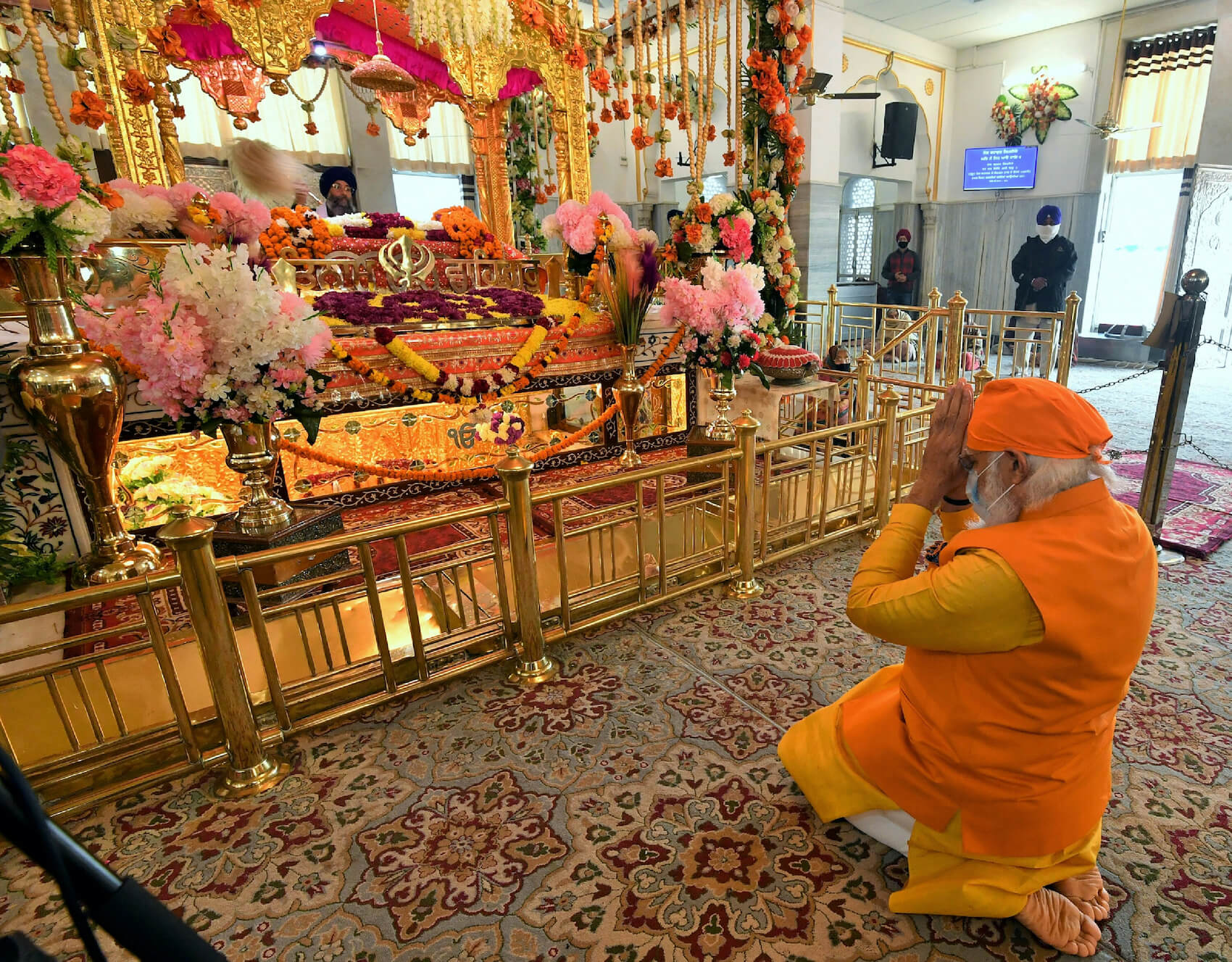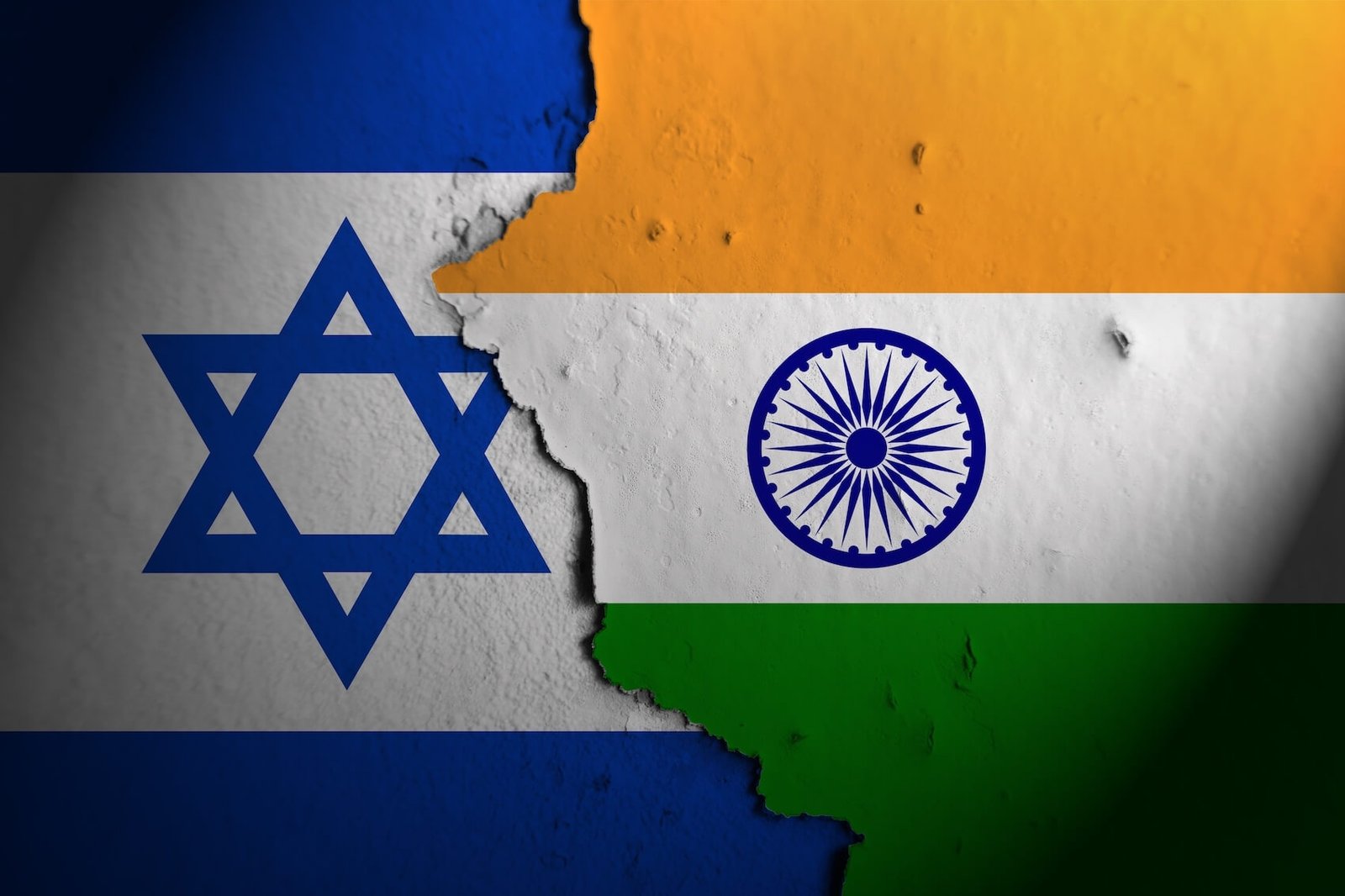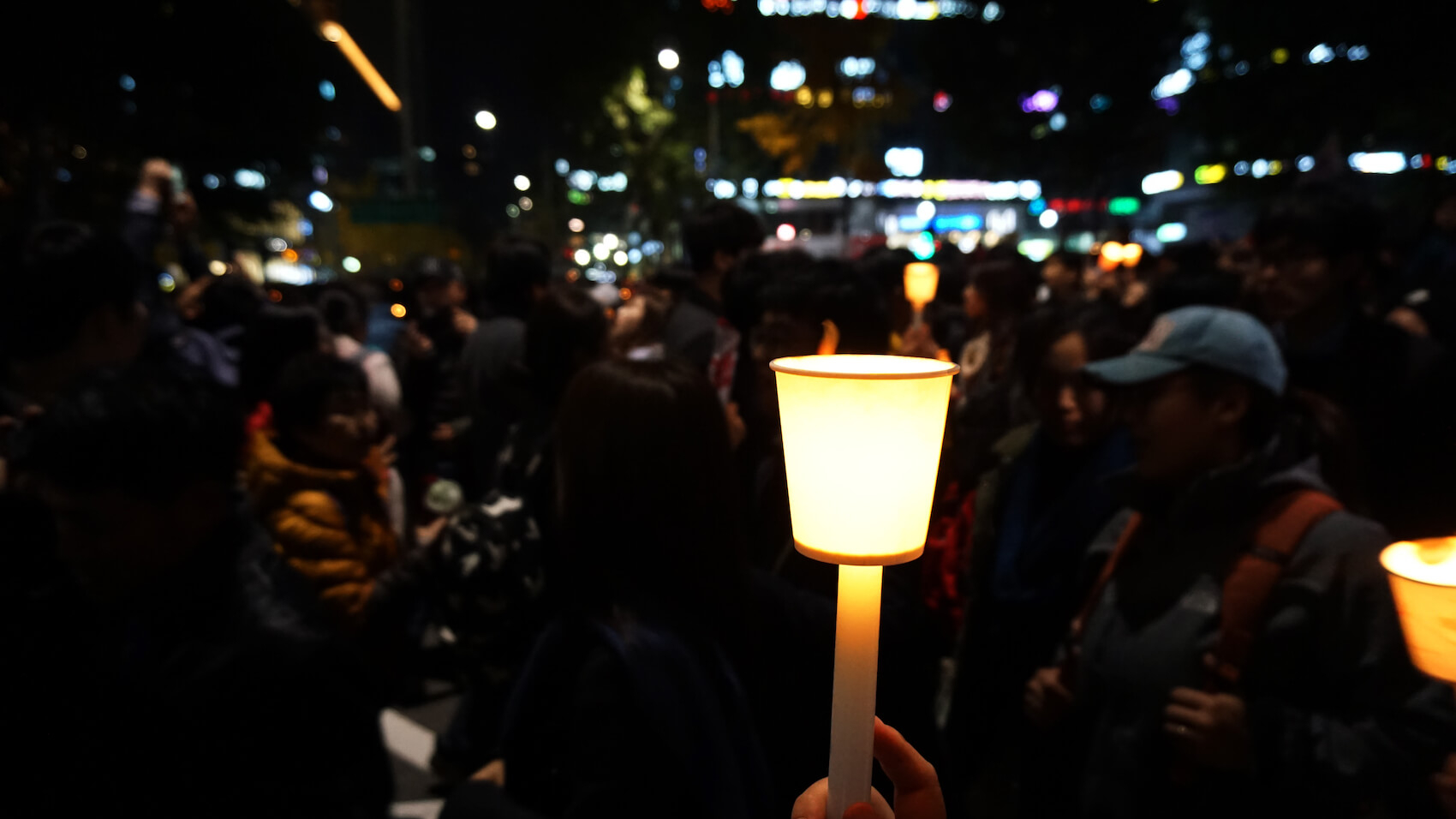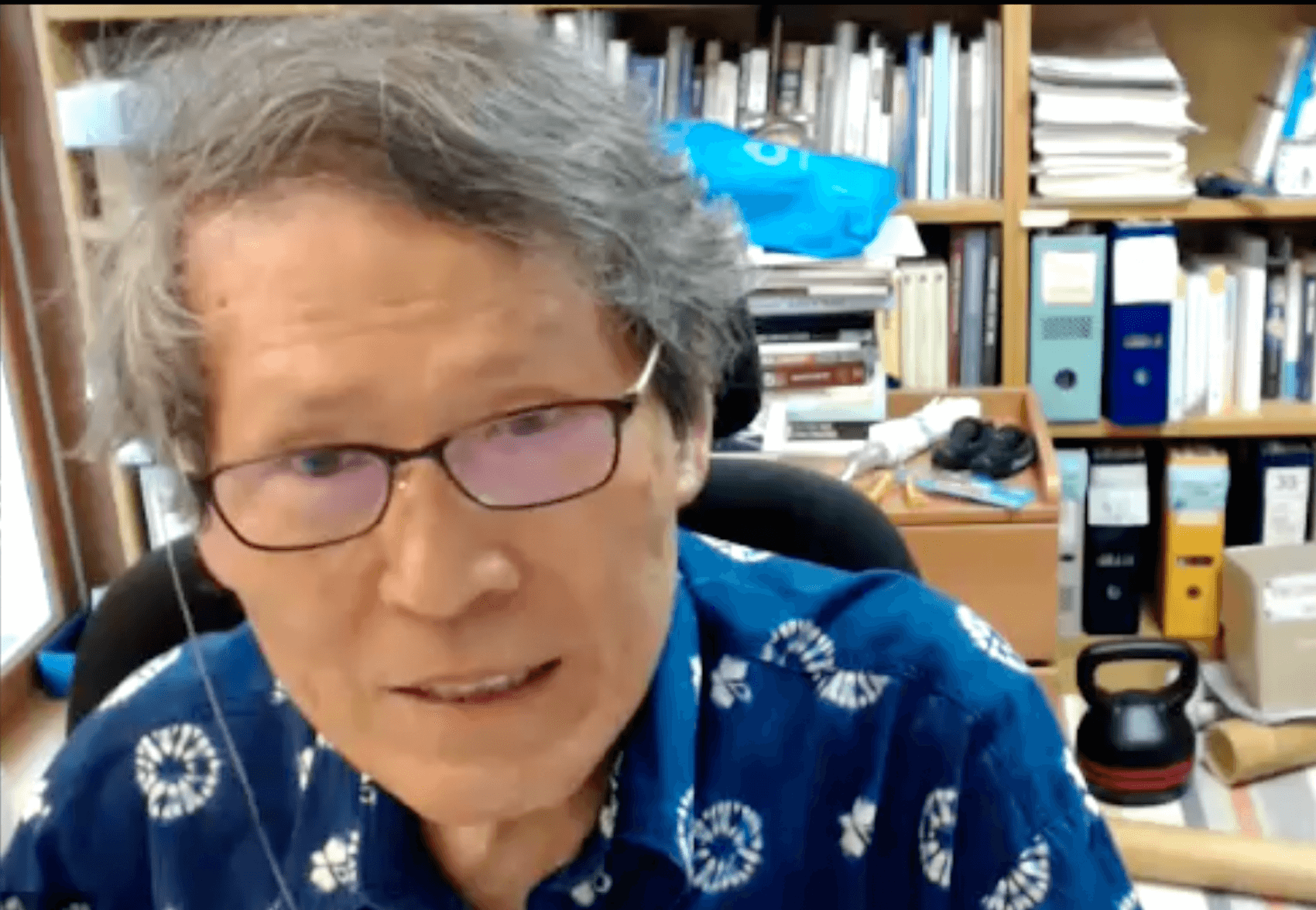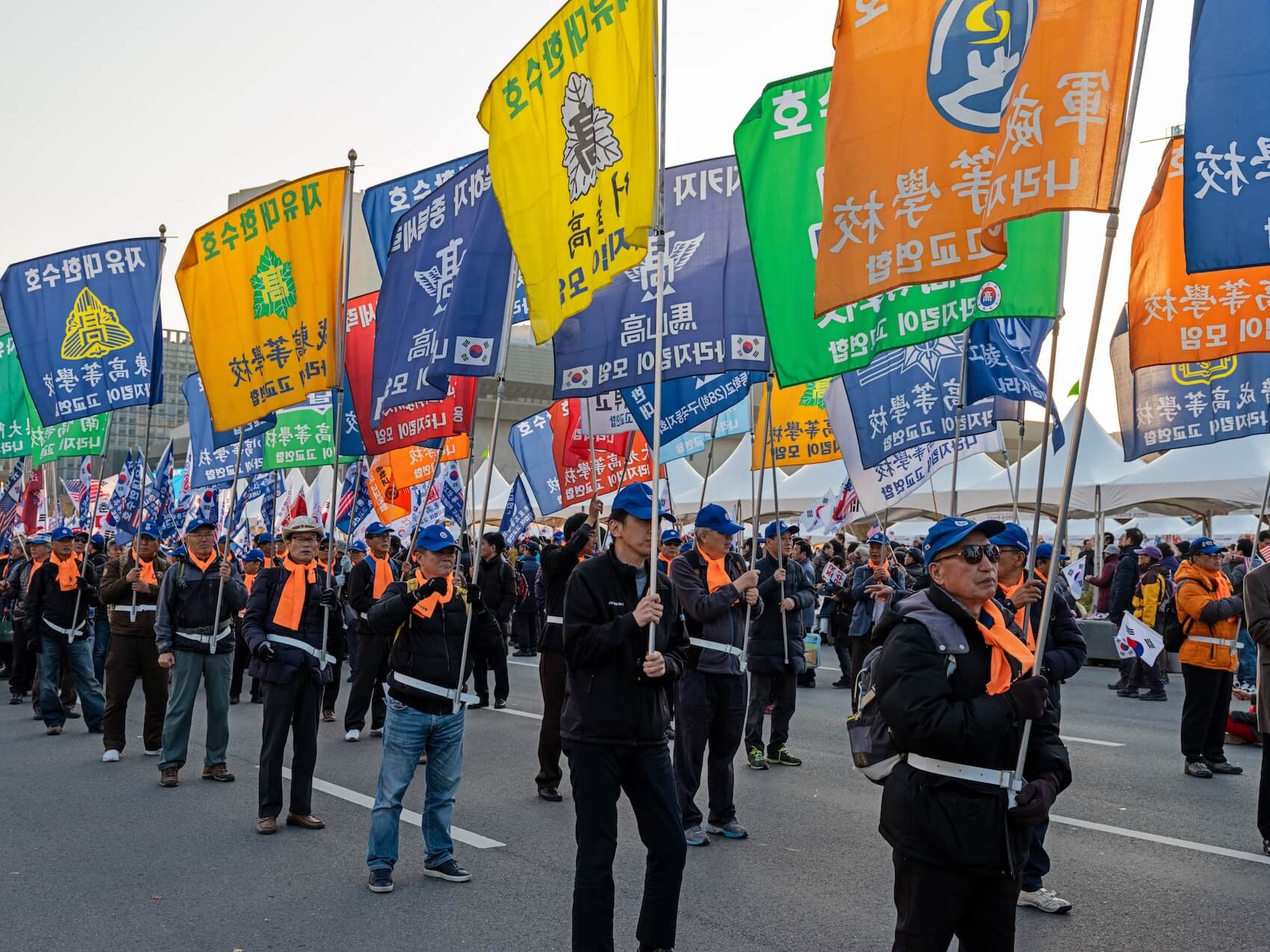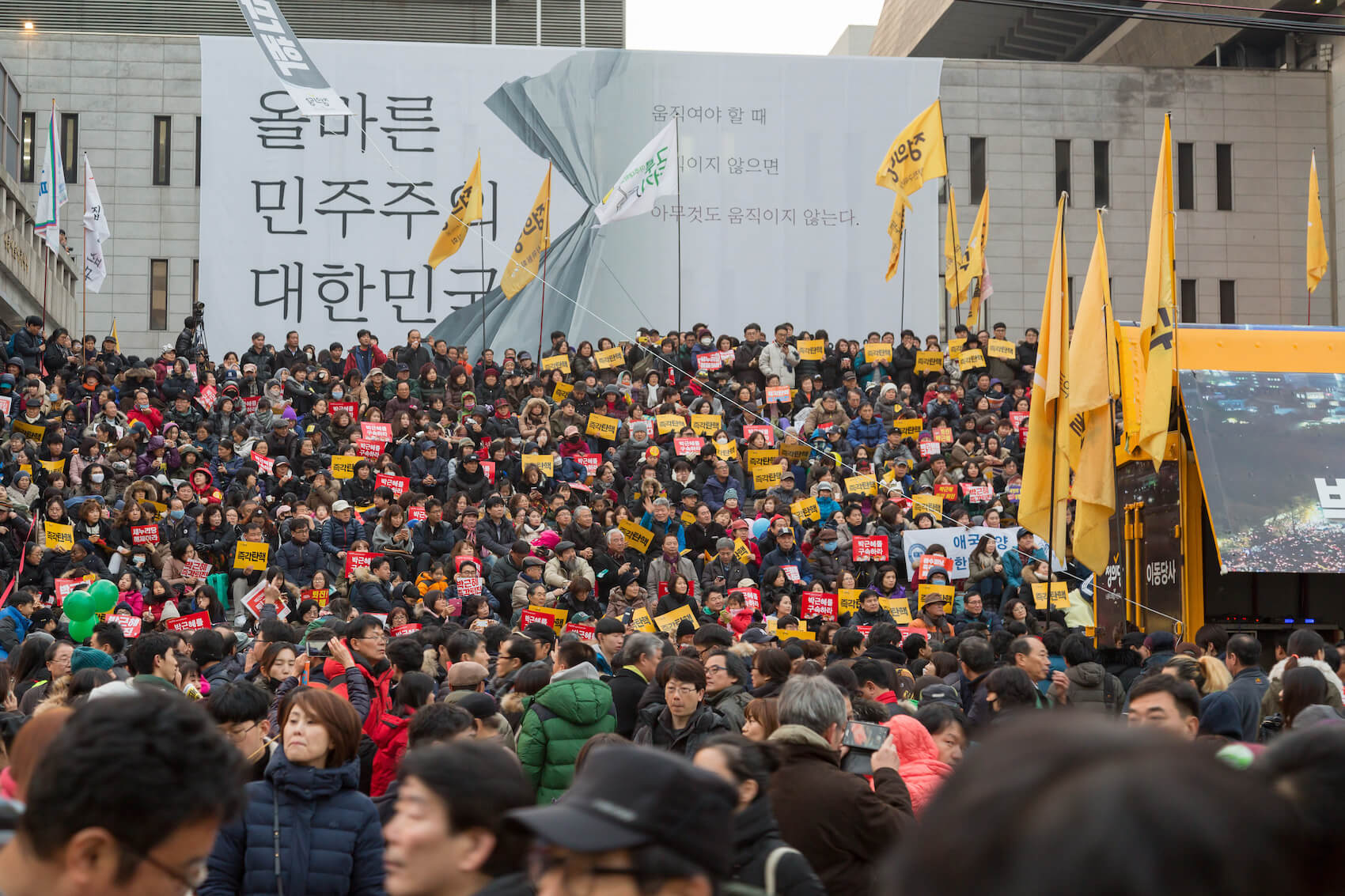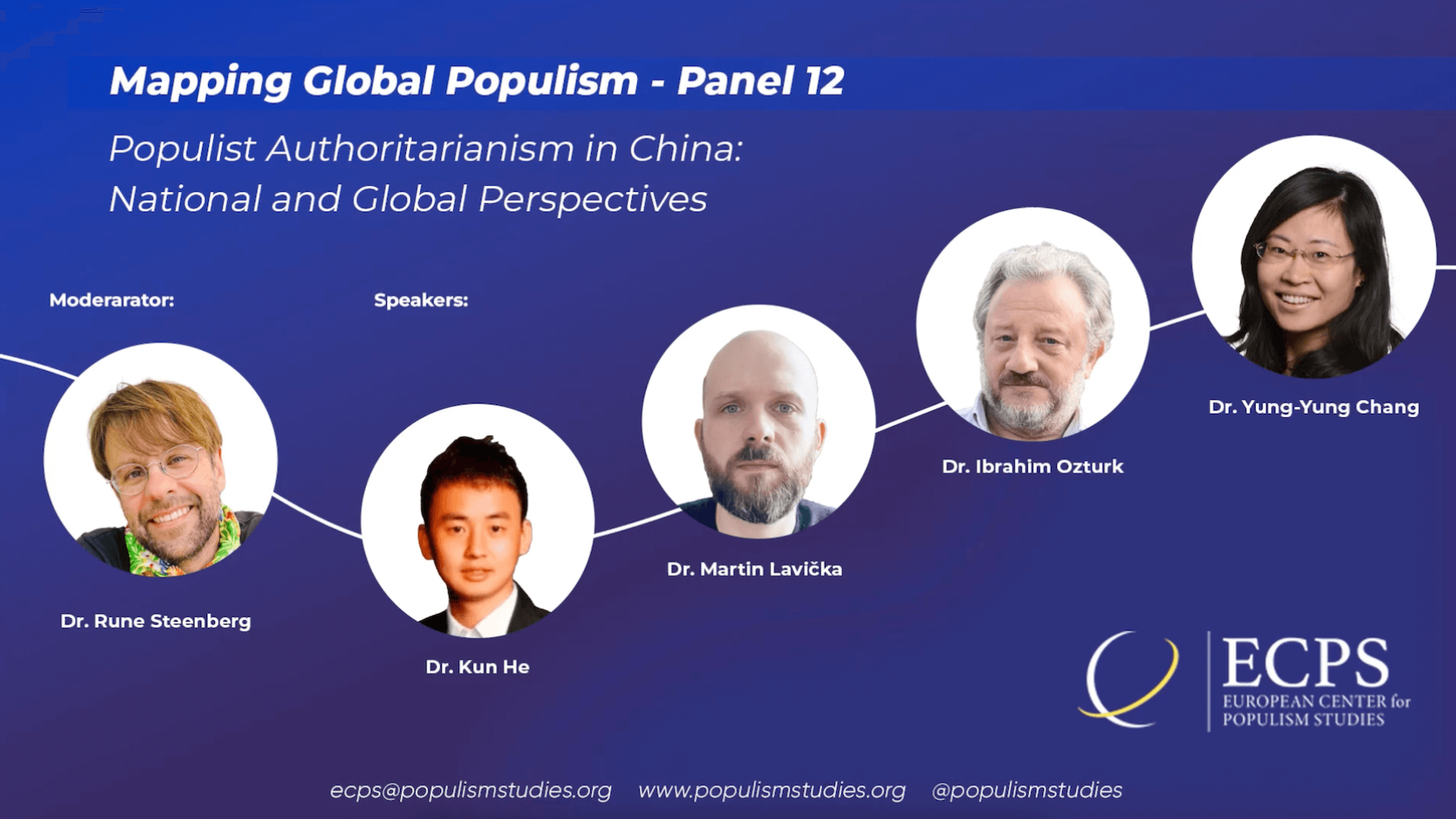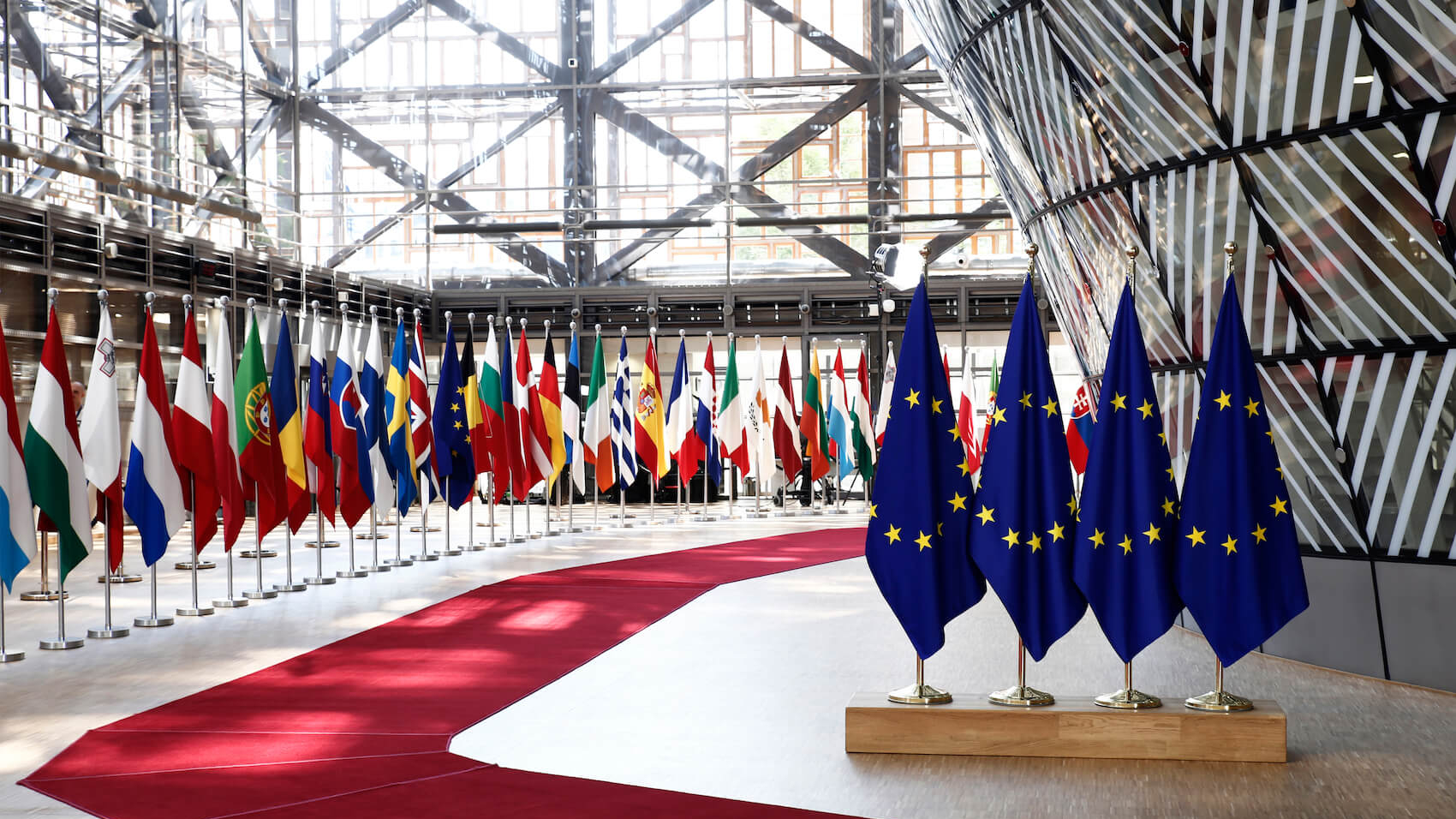Please cite as:
Sithole, Neo; Nguijol, Gabriel Cyril & Micozzi, Martina. (2024). Crisis of Democratic Political Legitimacy and Emerging Populism in Africa. European Center for Populism Studies (ECPS). May 2, 2024. https://doi.org/10.55271/rp0056
This report provides an overview of the second regional panel organized by the ECPS titled “Crisis of Democratic Political Legitimacy and Emerging Populism in Africa,” which took place online on May 9, 2024. Moderated skillfully by Dr. Chipo Dendere, the panel included experts from Southern Africa, Central Africa, and beyond. They offered a comprehensive examination of the largely overlooked phenomenon of populism in Africa. Through their insightful presentations, the panelists analyzed the various forms and behaviors of populism on the continent, tracing its historical role as a galvanizer during anti-colonial struggles for self-determination to its current impacts on social and political affairs. A common theme emerged: as both Africa and the globe witness a decline in democratic integrity despite the rise in populist movements, it is crucial to understand the complex roles populism plays—both beneficial and detrimental—in shaping local political landscapes.
Report by Neo Sithole, Gabriel Cyril Nguijol & Martina Micozzi
This report summarizes the second regional panel organized by the ECPS titled “Crisis of Democratic Political Legitimacy and Emerging Populism in Africa,” held online on May 9, 2024. Expertly moderated by Dr. Chipo Dendere, an assistant professor of Africana Studies at Wellesley College in Massachusetts, who studies the factors that influence party survival and democratization in the developing world, the panel featured experts from Southern Africa, Central Africa, and beyond. Each provided a diverse look into the understudied phenomenon of populism on the African continent.
Dr. Dendere forwent an opening speech to dive straight into the presentations, allowing more time for discussions. The panelists examined various unique aspects of populism in Africa. In order of presentation, Dr. Henning Melber, Professor, Nordic Africa Institute, Uppsala; Extraordinary Professor at the Department of Political Sciences at the University of Pretoria and the Centre for Gender and Africa Studies at the University of the Free State in Bloemfontein, gave an introductory overview of populism’s historical place in Africa, focusing on the narratives used by populist actors, particularly in Southern Africa. Dr. Sergiu Mișcoiu, researcher and Professor of Political Science at the Faculty of European Studies, Babeș-Bolyai University in Cluj-Napoca, explored the possibility of progressive populism in Africa. Dr. Edouard Epiphane Yogo, a political scientist specializing in international relations and strategic studies at the University of Yaoundé II, illuminated the relationship between populism and the challenges in African governance, emphasizing the tendency of populists to erode institutional stability.
Continuing the theme of governance from populism’s ‘supply side,’ Dr. Nchofua Anita Nyitioseh, an English law lecturer at the University of Bertoua, Faculty of Law and Political Science, discussed how government failures in services, welfare, and employment create fertile ground for populist support. Dr. Derick Fai Kinang, a Political Scientist, Jurist, Conflict Resolution Specialist, and Crime Expert with the Cameroon National Council of Crime Experts, reviewed how populist narratives further inflame hate speech and fuel societal divisions. Lastly, Dr. Ama-Ambo Chefor, a senior lecturer at the University of Dschang, Cameroon, examined how African populist actors reinforce patriarchal norms, undermining women’s and girls’ rights and undoing decades of gender-based societal progress.
Through their insightful presentations, each panelist provided thorough analyses of the shape and behaviors of populism in Africa, from its historical role as a galvanizer and unifier during the continent’s anti-colonial struggles for self-determination to its contemporary impacts on societal and political affairs. A unifying thread emerged: as the continent, and indeed the globe, experiences growing democratic decline despite the rise in populist expression, it is vital to understand the multifaceted roles populism plays—both positive and negative—in shaping Africa’s local political realities.
Dr. Henning Melber: “Various Facets of Populist, Authoritarian, and Nationalist Trends in Africa”
According to Dr. Henning Melber, the populist parties in Africa frequently rely on the continued heroic narrative of former liberation movements, seeking to connect the electorate with the country’s past to legitimize the present political realities. They appeal to a still-present struggle against foreign domination, marketing themselves as the only true alternative and promise of a better future—a concept Dr. Melber labeled ‘retrospectively applied populism.’ African liberation movements still retain a movement-like character while in government, often combining this with charismatic leaders and vivid individuals who make politics personal and immediate instead of remote and bureaucratic.
In the opening presentation, Dr. Henning Melber emphasized that populism in politics is far from a new phenomenon, despite the recent increase in scholarly attention likely driven by new communication technologies that enhance populism’s reach (such as ‘new media’ which are often effective tools for spreading populist messages). He pointed out that populism’s presence in the political sphere is not limited to African contexts. In reality, populist politics has manifested in various historical settings across numerous societies and ideological frameworks worldwide.
As is customary when discussing populism, Dr. Melber explained his understanding of the term. He stated that beyond its specific subjective content, which is typically context-dependent, populism operates through a distinctive kind of rhetoric that addresses the people simply and directly. According to Dr. Melber, populism gives people the impression that they matter, count, and are more important to the populist actors. He also noted that populist forms of mobilization are not necessarily despotic or authoritarian, as they are often perceived. Sometimes, populism can promote liberal democracy (either intentionally or deceptively) while remaining illiberal at its core.
Next, Dr. Melber shifted focus to populism in Africa, unpacking the behaviors and narratives of populist messages. In Africa, the transmission of populist messages often relies on personal appearances and face-to-face mobilization, highlighting a vital aspect of populism: the presence of leaders who personify populist policies and invite identification with individuals as much as with policy programs. Generally, there is a close affinity between forms of populism and strong nationalist-oriented forms of government and governance. Dr. Melber argued that this connection is rooted in the continent’s political history, where the fight for political self-determination cultivated strong nationalist tendencies that played a substantial role in nation-building. He further articulated that contemporary forms of populism on the continent are situated within established democracies, where populist figures mobilize against the establishment and appeal to the sentiments of those who are suspicious of the elites in the government.
To provide a mental picture of populist messaging and its relationship to Africa’s history of self-determination, Dr. Melber referred to former liberation movements in Southern Africa that now stand as the ruling parties in their respective governments, such as the African National Congress in South Africa and the South West Africa People’s Organization in Namibia. These parties frequently rely on the continued heroic narrative of former liberation movements, seeking to connect the electorate with the country’s past to legitimize the present political realities. They appeal to a still-present struggle against foreign domination, marketing themselves as the only true alternative and promise of a better future—a concept Dr. Melber labeled ‘retrospectively applied populism.’ Additionally, Dr. Melber articulated that outside of retrospectively applied populism, African liberation movements still retain a movement-like character while in government, often combining this with charismatic leaders and vivid individuals who make politics personal and immediate instead of remote and bureaucratic.
Dr. Sergiu Mișcoiu: “Taming the Lion: On the Conditions of Possibility of a Progressive Populism in Sub-Saharan Africa”
Dr. Sergiu Mișcoiu shared results from research conducted in 23 sub-Saharan African states aimed at understanding the conditions necessary for the emergence of progressive populist movements. The findings revealed a generalized mistrust in existing leaders, perceived to be under Western influence, alongside support for movements focused on improving material conditions and removing current elites from power. Respondents emphasized the need for former colonial powers to fully acknowledge their historical responsibility and support development projects effectively and impartially.
Our second panelist, Dr. Sergiu Mișcoiu, began by revisiting the centrality of nationalist-popular sovereignty for liberation movements in sub-Saharan Africa. He noted that many of these movements included authoritarian or even totalitarian components, whether from extreme ideas of Marxist-Leninism or ultra-nationalism. In this context, Dr. Mișcoiu posed the question, “Is progressive populism possible in sub-Saharan Africa?” and if so, what would its articulatory form and discursive contents be, and where would its main proponents emerge from?
Before answering, Dr. Mișcoiu unpacked how populism is understood in the context of his presentation. He explained that his understanding is derived from populism ‘discourse theory,’ built on the works of Ernesto Laclau, Chantal Mouffe, and Jacques Ranciere. Dr. Mișcoiu emphasized that populism can be defined not as an ideology but rather as a discursive register with a hegemonic vocation. Aligning with the general consensus, it is based on an “us vs. them” narrative, where on one side there is “the people,” who should align with populist leaders, parties, intellectuals, and those expressing demands for justice, redistribution, and morality. On the other side are the “non-people,” comprising the elites, the rich, foreigners, and minorities who are perceived as preventing the people from being themselves.
Progressive populism, however, was described as the virtuous articulation of the popular identity that includes all groups and individuals who were previously oppressed or marginalized, or as Ranciere calls them, “the part of no part.” Progressive populism is not devoid of exclusion; those excluded are the forces that prevent unity and democratic consistency among the people. In this case, progressive populism can be emancipatory, aiming at the economic and political empowerment of the people, as well as being liberal democratic, establishing a tolerant and inclusive participatory system of collective decision-making.
In setting the scene, Dr. Mișcoiu reviewed the evolution of populism across the continent, beginning in the 1950s with the first emancipatory anti-colonial platforms. He highlighted the 1960s wave of independence, which initially sparked societal enthusiasm but soon waned as democracy was sacrificed on the altar of Cold War alignments. This period led to the rise of populist movements under Marxist-Leninist or ethno-nationalist ideologies, culminating in the 1980s with the growth of authoritarianism and widespread political repression.
Having established a conceptual foundation of progressive populism and contextualized the historical background of African populism, Dr. Mișcoiu addressed his earlier question by examining the case of Senegal’s recently elected president, Ousmane Sonko. Sonko has exhibited aspects of progressive populism by advocating for a political platform rooted in deliberative democracy, social and economic progressivism, and a stance against elitism, corruption, stagnation, and neo-colonial dependence. His foreign policy prioritizes state interests over broader African values. However, Sonko’s platform falls short of being fully progressive due to its ambiguity around cultural and societal emancipation and its moral and cultural conservatism, particularly concerning women’s rights.
In closing, Dr. Mișcoiu shared results from research conducted in 23 sub-Saharan African states aimed at understanding the conditions necessary for the emergence of progressive populist movements. The findings revealed a generalized mistrust in existing leaders, perceived to be under Western influence, alongside support for movements focused on improving material conditions and removing current elites from power. Respondents emphasized the need for former colonial powers to fully acknowledge their historical responsibility and support development projects effectively and impartially. However, they also noted that while reconciliation and tolerance are essential, they cannot come at the expense of radical reforms.
Conversely, these results also highlight more harmful aspects, such as support for populist movements rooted in essentialist ethno-religious traditions and skepticism about the sustainability of democracy in Africa. Some respondents advocated for strong leadership, order, and discipline as necessary guarantees of freedom.
Dr. Edouard Epiphane Yogo: “Populism and the Challenges of Democratic Governance in Africa”
According to Dr. Yogo, who examined the strategies contributing to the success of prominent populist leaders in Africa, these leaders often employ nationalist rhetoric that emphasizes national pride and sovereignty, tapping into sentiments of patriotism to gather support. They capitalize on anti-elite rhetoric, portraying themselves as champions of the people against corrupt or out-of-touch political elites. Furthermore, populist leaders in Africa frequently promise simple solutions to complex issues, offering quick fixes to deep-seated problems such as poverty, unemployment, and inadequate public services.
Dr. Edouard Epiphane Yogo’s contribution to the panel focused on the link between the rise of populism and the challenges of democratic governance in Africa. Dr. Yogo began by mapping the African political landscape, which he characterized by various challenges, including governance issues, socio-economic disparities, and post-colonial legacies. He noted a recent rise in populism in Africa, structured around charismatic leaders leveraging popular grievances to gain power. This trend has significant implications for democratic governance in Africa, shaping political discourse and influencing policy decisions.
Dr. Yogo noted that populism in Africa can be seen as a political movement emphasizing the interests and needs of the common people against those of established elites or perceived outsiders. Populism generally involves charismatic leaders employing discourses that appeal to emotions, identity, nationalist rhetoric, anti-elite sentiment, and promises of rapid changes or transformation, rather than rational policy solutions.
Dr. Yogo further explained that populism in Africa can be better understood through several factors, such as socio-economic and historical contexts. Persistent socio-economic inequalities foster the rise of populist discourses, as marginalized populations express their grievances. Corruption also plays a significant role, weakening trust in traditional political institutions and prompting people to seek alternative leaders who promise to eradicate corruption. Additionally, post-colonial legacies, including ethnic divisions and weak state institutions, exacerbate social tensions and provide opportunities for populist leaders to exploit identity politics.
Dr. Yogo also examined the strategies contributing to the success of prominent populist leaders in Africa. These leaders often employ nationalist rhetoric that emphasizes national pride and sovereignty, tapping into sentiments of patriotism to gather support. They capitalize on anti-elite rhetoric, portraying themselves as champions of the people against corrupt or out-of-touch political elites. Furthermore, populist leaders in Africa frequently promise simple solutions to complex issues, offering quick fixes to deep-seated problems such as poverty, unemployment, and inadequate public services.
Dr. Yogo further discussed the consequences of populism on democratic governance in Africa. According to him, populism weakens democratic institutions, such as the separation of powers, which is essential for maintaining checks and balances within a democratic system. Populist leaders may attempt to consolidate power by undermining the independence of the judiciary, sidelining legislative bodies, and concentrating authority in the executive branch. They also contribute to political polarization and social fragmentation by framing political discourse in terms of “us” versus “them.” Populist leaders often appeal to a narrow segment of the population, fostering divisions along ethnic, religious, or regional lines. Additionally, populism impacts the rule of law and human rights by resorting to repression, such as the arbitrary detention of political opponents, censorship of the media, and restrictions on freedom of expression.
To address the dynamics of populism in Africa, Dr. Yogo elaborated on several perspectives. He emphasized that African states should:
1. Strengthen democratic institutions and inclusive governance:
– Promote the separation of powers.
– Guarantee the independence of the judicial system.
– Protect civil liberties, including freedom of speech, assembly, and association.
2. Promote transparency and accountability:
– Implement robust mechanisms such as oversight bodies and whistleblower protections.
– Rebuild citizens’ trust in the political system.
3. Combat misinformation and political manipulation:
– Invest in promoting media liberty and critical thinking skills to empower citizens to discern fact from fiction and resist manipulation.
– Promote collaborative efforts between governments, civil society, and technological companies to combat misinformation and preserve the integrity of democratic elections and public discourse.
4. Encourage citizen participation and political education:
– Facilitate access to information through transparent government communication channels and public forums.
– Foster dialogue and collaboration between government officials and citizens through public consultations and participation in decision-making processes.
In wrapping up, Dr. Yogo called for action to fight against populism in Africa. He emphasized that these actions should focus on preserving democracy and strengthening democratic institutions. He advocated for collaborative efforts between governments, civil society, and citizens to uphold democratic principles, protect human rights, and promote inclusive governance.
Dr. Nchofua Anita Nyitioseh: “Democratizing Africa: Navigating Populist Trends, Building Trust in Institutions, and Promoting Stability through Inclusive Governance”
Dr. Nchofua Anita Nyitioseh outlined, much like Dr. Yogo, that populist leaders are often charismatic figures who exploit public disappointment with the status quo and challenge established institutions. Dr. Nyitioseh described populism in Africa as a political approach that appeals to ordinary people who feel their concerns are disregarded by established elite groups. She explained that populism manifests in various forms and ideologies but often involves simplifying complex issues and using emotional rhetoric to gain support.
In her presentation, Dr. Nchofua Anita Nyitioseh introduced the triangulation between populist trends, the strengthening of institutions, and the promotion of stability through inclusive governance. According to her, this triangulation renders the democratization process in Africa very complex and fragile. She outlined, much like Dr. Yogo, that populist leaders are often charismatic figures who exploit public disappointment with the status quo and challenge established institutions. Dr. Nyitioseh described populism in Africa as a political approach that appeals to ordinary people who feel their concerns are disregarded by established elite groups. She explained that populism manifests in various forms and ideologies but often involves simplifying complex issues and using emotional rhetoric to gain support. Dr. Nyitioseh highlighted this form of populism during the Kenyan elections in 2017, where President Uhuru Kenyatta used populist rhetoric to consolidate his power base.
During the field trip, Dr. Nyitioseh navigated the delicate situation surrounding the causes and consequences of populism in Africa. According to her, populism is driven by socio-economic inequalities, characterized by a growing gap between the rich and the poor, and reinforced by resentment toward elites perceived as indifferent to the struggles of ordinary people. She illustrated this by referencing the Gini coefficient in South Africa, which has been used to indicate significant income inequality between the elites and the general population. The Gini coefficient was around 0.63 in 2009, remained the same in 2022, and continues to reflect substantial disparities in income distribution in the country.
Corruption is also a significant factor in the rise of populism in Africa, as it weakens institutions and destroys public trust. Dr. Nyitioseh cited examples such as Zimbabwe, where the Mugabe regime’s corruption and mismanagement led to economic collapse, driving public disappointment and paving the way for populist movements. In Nigeria, widespread corruption among political elites favored support for populist figures like Muhammadu Buhari, who promised to tackle corruption. In South Africa, the ANC’s corruption scandals under Jacob Zuma’s presidency contributed to the rise of populist opposition parties like the Economic Freedom Fighters (EFF).
Youth unemployment also creates fertile ground for populism in Africa, as disillusioned young people may turn to charismatic leaders offering simple solutions. Populist leaders often exploit these frustrations by simplifying complex issues and identifying scapegoats. While they may initially appear responsive to citizen concerns, their rhetoric can exacerbate social divisions and undermine democratic institutions. Dr. Nyitioseh illustrated this with the example of Julius Malema in South Africa, who gained popularity among unemployed youth by advocating for radical economic policies and land redistribution. In Nigeria, the “Not Too Young to Run” movement emerged partly in response to high youth unemployment rates, reflecting a desire for political change among the younger generation. A similar trend was observed in Zimbabwe with the creation of the “This Flag” movement, led by Pastor Evan Mawarire, who highlighted youth frustrations with unemployment and government corruption, calling for united support for change.
Dr. Nyitioseh then outlined the best strategies to combat populism in Africa. She emphasized the importance of establishing and consolidating the rule of law through the fair and impartial application of laws, regardless of social status. For instance, South Africa has undertaken constitutional reforms to strengthen institutions and uphold the rule of law, while Liberia has made efforts to reform its judicial system after the civil war. Ensuring that the judiciary is free from political influence is crucial in this regard.
She said Rwanda and Ghana have implemented robust anti-corruption measures, essential for promoting transparency and accountability, key elements of the rule of law. In Kenya, vibrant civil society movements advocating for legal reforms and accountability have contributed to a stronger rule of law. Dr. Nyitioseh also highlighted the importance of promoting human rights and fighting corruption as vital components in eradicating populism in Africa. Countries like Rwanda, Botswana, and Mauritius have established anti-corruption commissions to address these issues effectively.
Dr. Nyitioseh reminded us that African countries must promote good governance by empowering civil society and encouraging effective decentralization, as seen in Kenya, South Africa, and Ethiopia. She stressed the need for investing in mass education, as democratization in Africa is an ongoing process. In conclusion, Dr. Nyitioseh asserted that if African countries address the root causes of populism, foster trust in institutions, and promote inclusive governance, they can build more stable and democratic societies free from populism.
Dr. Derick Fai Kinang: “Populism Discourse and the Proliferation of Hate during Elections in Central African Sub-region.”
Dr. Derick Fai Kinang pointed out that the use of ethno-tribal stereotypes and hateful clichés during the election periods in Africa undermines social cohesion, fuels tensions, and can lead to conflict. He emphasized the need for reforms to promote justice, democratic values, and socio-economic development to counteract the harmful effects of populism and hate speech. By implementing these measures, societies can become more resilient and capable of discerning between populist and democratic ideologies, ultimately fostering sustainable peace and development.
Dr. Derick Fai Kinang’s presentation focused on the relationship between populist discourse and the proliferation of hate speech during elections in the Central African sub-region. He began by noting that populism has existed in Africa in various waves, particularly in Sub-Saharan Africa. According to Dr. Kinang, one of the most dangerous waves emerged in the early 1990s with the advent of multi-party politics in Africa. During this period, the use of populist discourse became prevalent as rulers sought to conquer and exercise power.
Dr. Kinang referenced Danielle Resnick (2010) to highlight how the imposition of multi-party politics led to the adoption of populist strategies, often accompanied by hate speech, as a means to achieve and maintain power. This approach, he argued, has significantly impacted the political landscape in the Central African sub-region, contributing to increased tensions and undermining democratic processes.
Before delving into the intersection between populism and hate speech during elections, Dr. Kinang defined populism. Citing Jane Mansbridge and Stephen Macedo, he explained that populism involves the people in a moral battle against the elites. This dynamic, where political leaders using a populist approach encourage people to see their political engagement as part of this moral battle, can sometimes devolve into hate speech.
Dr. Kinang noted that there is no universally accepted definition of hate speech but often refers to the one provided by the United Nations. According to the UN, hate speech is “any form of communication in speech, writing, or behavior that attacks or uses pejorative and discriminatory language concerning someone’s religion, ethnicity, color, descent, nationality, gender, or identity factor.” In Dr. Kinang’s opinion, hate speech is any form of communication that attacks, discriminates against, or denigrates someone because of their background.
Furthermore, Dr. Kinang emphasized the significance of elections, highlighting their crucial role in understanding how populist discourse, particularly through the use of hate speech, manifests during election periods. Using Ewang’s (2008) definition, he stated, “elections can be considered as the mechanism by which power is given to certain individuals to govern the people.” Populist discourse, through the use of hate speech, has been a widely used political strategy to conquer and exercise power during elections in Africa, especially in the Central African sub-region. During the electoral calendar, political populism often reaches its peak during presidential elections.
Dr. Kinang highlighted the 2018 presidential elections in Cameroon as an example of deep national polarization. He pointed out that the use of ethno-tribal stereotypes and hateful clichés during these periods undermines social cohesion, fuels tensions, and can lead to conflict. He emphasized the need for reforms to promote justice, democratic values, and socio-economic development to counteract the harmful effects of populism and hate speech. By implementing these measures, societies can become more resilient and capable of discerning between populist and democratic ideologies, ultimately fostering sustainable peace and development.
Dr. Ama-Ambo Chefor: “The Protection of Female Rights and the Rise of Populism in African Democracies: A Need for a Reformed Society”
Dr. Ama-Ambo Chefor emphasized that the rule of law is essential for maintaining societal order and ensuring gender equality, highlighting its incorporation into many African constitutions. For example, Dr. Chefor mentioned the Maputo Protocol, which protects women’s rights and sets a minimum age for marriage to prevent early marriages. Despite these legal frameworks, cultural norms and biases in Africa continue to suppress women’s voices, affecting their rights and status.
Panel’s last presenter, Dr. Ama-Ambo Chefor, focused her presentation on the challenging intersection between the protection of women’s rights and the rise of populism in African democracies. She divided the presentation into four parts, each highlighting populism’s implications on women’s rights, the rule of law, and democracy. Dr. Chefor began by defining populism, noting that while the concept can carry various meanings, she adopted a simpler approach, viewing populism as “the will of the people” and equating it with public opinion. By adopting this definition, Dr. Chefor aimed to illustrate how populism contrasts with traditional democratic representation. She described populism as a system where politicians or political leaders tend to depend on the will of the people, often against their representatives, whom they portray as corrupt.
Dr. Chefor raised the question of whether populism is legal or has legal backing. She noted that while populism appears to be legally supported by the Universal Declaration of Human Rights, particularly its provisions for freedom of expression and opinion, it raises doubts about its impact on society. Specifically, she pointed out that populism can either benefit or harm societal values, particularly by undermining the rule of law.
Subsequently, Dr. Chefor proceeded with the second part of her presentation, examining the rule of law and arguing that it is a system where law is supreme, and society should be governed by the statute of law. She emphasized that the rule of law is essential for maintaining societal order and ensuring gender equality, highlighting its incorporation into many African constitutions. For example, Dr. Chefor mentioned the Maputo Protocol, which protects women’s rights and sets a minimum age for marriage to prevent early marriages. Despite these legal frameworks, cultural norms and biases in Africa continue to suppress women’s voices, affecting their rights and status.
Dr. Chefor argued that these difficulties persist due to the advent of populism, which tends to reinforce traditional patriarchal beliefs that women should not have a voice or an opinion. This led to the third part of her presentation, where she addressed the implications of the failure of democracy. Dr. Chefor explained how populist tendencies can disrupt the rule of law, leading to failures in democratic processes. This disruption is evident in outdated or biased laws, such as those in Cameroon’s penal code before 2016, which reflected deep-seated societal biases that hinder gender equality and justice.
To counter these challenges, Dr. Chefor emphasized the need for accurate and necessary information for a successful society. An informed public can better navigate the challenges posed by populism and ensure the effective implementation of democracy and the rule of law.



